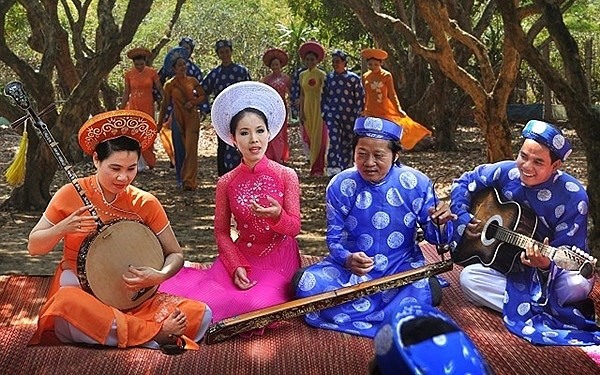 Life & Style
Life & Style

People have gathered in the central province of Bạc Liêu to attend the 9th Southern Folk Music and Songs Festival of the Provinces of Sóc Trăng, Bạc Liêu and Cà Mau.
 |
| To southern people, folk melodies have been rooted deep inside their souls. Photo vov.vn |
SÓC TRĂNG — People have gathered in the central province of Bạc Liêu to attend the 9th Southern Folk Music and Songs Festival of the Provinces of Sóc Trăng, Bạc Liêu and Cà Mau.
In his opening speech at the festival on Monday, Trần Minh Lý, director of Sóc Trăng Province’s Culture, Sports and Tourism Department, said from the cradle of đờn ca tài tử (southern folk music and songs) in Bạc Liêu Province, the art has developed throughout the southern region.
“To southern people, folk melodies have been rooted deep inside their souls,” he said, “Practising the art has been a popular movement, an indispensable cultural food for the mind and is the pride of the locals.”
The event gathers dozens of amateur teams, with singers and traditional instrument alists, who perform songs with content, praising the country, people and encouraging people to join hands and build a better life.
The teams are divided into two categories. The first category gathers artistes from the three provinces, while the second one gathers only artistes from Sóc Trăng.
Each team sings six songs, featuring the traditional melodies of Nam, Bắc, Oán and Vọng Cổ, while their accompanying band performs at least three instruments, such as đàn kìm (double stringed lute), đàn tranh (16-chord zither), đàn bầu (monochord zither) and the ancient guitar.
The awarding ceremony will be organised on Saturday at the Victory Monument Complex, Ngã Năm Town, in the central of Sóc Trăng.
Considered as one of the country’s main music genres, đờn ca tài tử originated from Huế court music and folk music of the southern region. The genre has been developing since the 19th century, adapting to local tastes. It thrived in the early 20th century and remains crucial to the country’s traditional culture.
The music is typically performed at festivals, death anniversary rituals and celebrations by farmer-performers. Instrumentalists and singers express their feelings by improvising based on 20 principal songs and 72 classical songs. The art has been handed down through generations.
The art was listed in the Representative List of the Intangible Cultural Heritage of Humanity on December 5, 2013, by the UNESCO. — VNS




